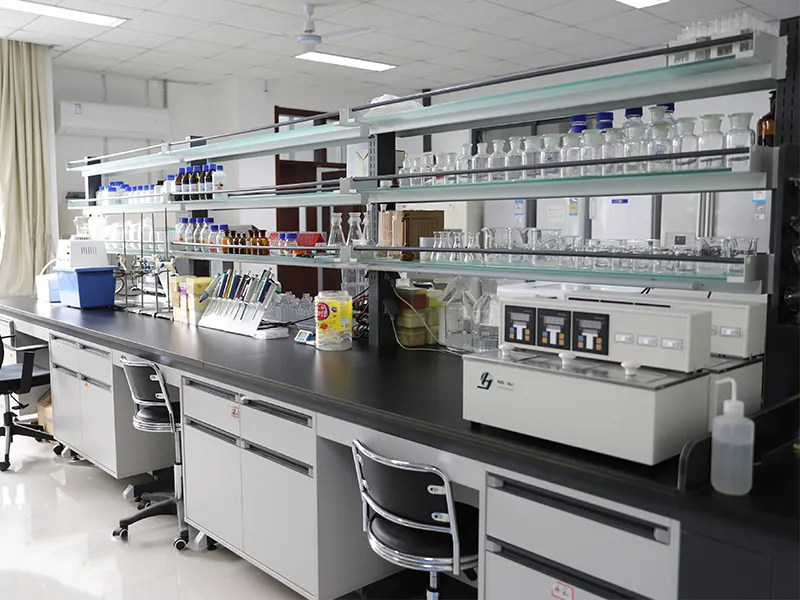What are the uses, characteristics and advantages of 2,5-Dimethoxybenzaldehyde CAS 93-02-7?
Have Any Questions?
Let our vertically integrated solutions – from Chinese manufacturing hubs to your local warehouse – become your competitive advantage.
- +86 13376344351
Leave Your Message
What are the uses, characteristics and advantages of 2,5-Dimethoxybenzaldehyde CAS 93-02-7?


2,5-Dimethoxybenzaldehyde (CAS No.: 93-02-7) is an important organic compound. Due to its unique chemical structure and versatility, it occupies an important position in the fields of medicine and chemical industry. Its high purity and reactivity are its core advantages, but attention should be paid to safety protection during operation. Future research on green synthesis and resource utilization may further expand its application scenarios.
2,5-Dimethoxybenzaldehyde CAS 93-02-7 is an important organic compound with the following uses, characteristics and advantages:
Medical field: DMPP and its derivatives have potential medicinal value and can be used as candidate drugs for antibacterial, antiviral or anti-tumor drugs. It is expected to develop new drugs with high efficiency, low toxicity and broad spectrum, but most of them are still in the research stage.
1. Application
(1) Pharmaceutical intermediates: 2,5-Dimethoxybenzaldehyde is widely used in drug synthesis, for example, as a key intermediate for the preparation of antibacterial agents, antiviral drugs or other complex organic molecules.
(2) Dye and fragrance industry: In the field of dyes and fragrances, 2,5-Dimethoxybenzaldehyde can be used as a raw material for the synthesis of aromatic compounds, giving the product a specific smell or color.
(3) Fungicide and preservative: Some studies have shown that 2,5-Dimethoxybenzaldehyde may be used as a precursor of fungicides or preservatives, especially in the development of environmentally friendly products.
(4) Organic synthesis research: 2,5-Dimethoxybenzaldehyde is often used in condensation reactions, redox reactions, etc. in organic synthesis due to its active aldehyde group and methoxyl substitution structure.
1. Key intermediates in pharmaceutical synthesis
– Parkinson’s disease drugs: As the starting material for fenelamine (an anti-Parkinson’s drug), it participates in condensation reactions via its acetyl group to construct the drug molecule skeleton.
– Alkaloid analog synthesis: Used to synthesize simplified structural analogs of the natural anthelmintic alkaloid Waltherione A, such as compound A-12, which exhibits a 72-hour lethality rate of 69.7% against southern root-knot nematodes.
2. Pesticide and dye industry
– Pesticide intermediates: Participate in the synthesis of functional molecules for insecticides and anthelmintics.
– Dye intermediates: As aromatic aldehydes, they are used in the synthesis of azo dyes and fluorescent probes (e.g., pH sensors).
3. Fragrances and cosmetics
– Fragrance enhancers: Used in perfumes, shampoos, etc., to provide a lasting fresh scent.
– Hair Dye Auxiliaries: Enhance the color brightness and adhesion of hair dyes.
4. Materials Science
– Organic Synthesis Building Blocks: Used to construct nonlinear optical materials and polyethylene glycol-modified compounds (e.g., DSPE-PEG-NH₂).


2. Characteristics
(1) Physical and chemical properties
Melting point: 46-48°C (lit.), light yellow crystalline powder.
Boiling point: 283.8°C at normal pressure, 146°C at low pressure (10 mmHg), suitable for high temperature reactions14.
Solubility: easily soluble in organic solvents such as ethanol, ether, chloroform, and slightly soluble in water.
Density: about 1.1 g/cm³, refractive index 1.534.
(2) Stability and sensitivity:
Sensitive to air, need to be sealed and stored away from light to prevent oxidation or decomposition.
The chemical properties are stable, but may react in the presence of strong oxidants.
(3) Safety characteristics:
Hazard: It is irritating (GHS07/GHS08). Contact with skin or eyes may cause irritation, and inhalation may cause respiratory allergies.
Storage requirements: It needs to be stored in a cool and dry environment and avoid contact with strong oxidants.
3. Advantages
(1) High reactivity: The synergistic effect of aldehyde and methoxy groups makes it highly efficient in organic synthesis, especially suitable for constructing complex molecular structures.
(2) Versatility: 2,5-Dimethoxybenzaldehyde can be used as a starting material for a variety of reactions, such as condensation, alkylation, etc., and its application range covers multiple fields such as medicine and materials.
(3) Mature industrial production: The production process of 2,5-Dimethoxybenzaldehyde is relatively mature. We can provide different specifications (such as 99% purity) and packaging (25kg/barrel, 500g/bag, etc.) to meet laboratory and industrial needs.
(4) Environmental protection potential: Studies have shown that 2,5-Dimethoxybenzaldehyde can be recycled through waste extraction (such as lignin derivatives), which is in line with the development trend of green chemistry.

